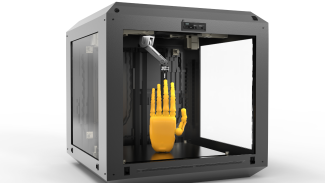
Regrowing Bones?
Cosmo's Thoughts- Do you need a new hand? How about a new thumb? Probably not a new skull(laugh). We are living on the precipice of what
most of us would consider miraculous. Try to imagine what is coming that we never dreamt of before. These are the reasons for optimism and
looking forward positively.
EpiBone is a company focused on revolutionizing bone grafting through tissue engineering and regenerative medicine techniques. The company specializes in
growing personalized bone grafts using a patient's own cells. Here's how the process generally works:
1. Patient's Cells Collection: First, a small sample of the patient's cells (typically from fat tissue) is collected through a minimally invasive procedure.
2. Cell Culture and Growth: EpiBone then isolates and cultures the patient's cells in a lab environment. These cells are guided to differentiate into bone cells using specific growth factors and culture conditions.
3. 3D Printing Scaffold: Once enough bone cells have been grown, EpiBone uses 3D printing technology to create a scaffold that mimics the exact shape and structure needed for the bone graft.
4. Seed Cells onto Scaffold: The cultured bone cells are then carefully seeded onto the scaffold. Over time, these cells continue to grow and populate the scaffold, forming a living, functional bone graft.
5. Implantation: Once the bone graft is ready, it can be implanted into the patient at the site of bone injury or defect. Because the graft is made from the patient's own cells, the risk of rejection is minimized, and the graft has the potential to integrate seamlessly with the surrounding bone tissue.
EpiBone's approach offers several advantages over traditional bone grafting methods, including the ability to create customized grafts tailored to each patient's specific needs, reduced risk of rejection, and potentially faster healing times.

